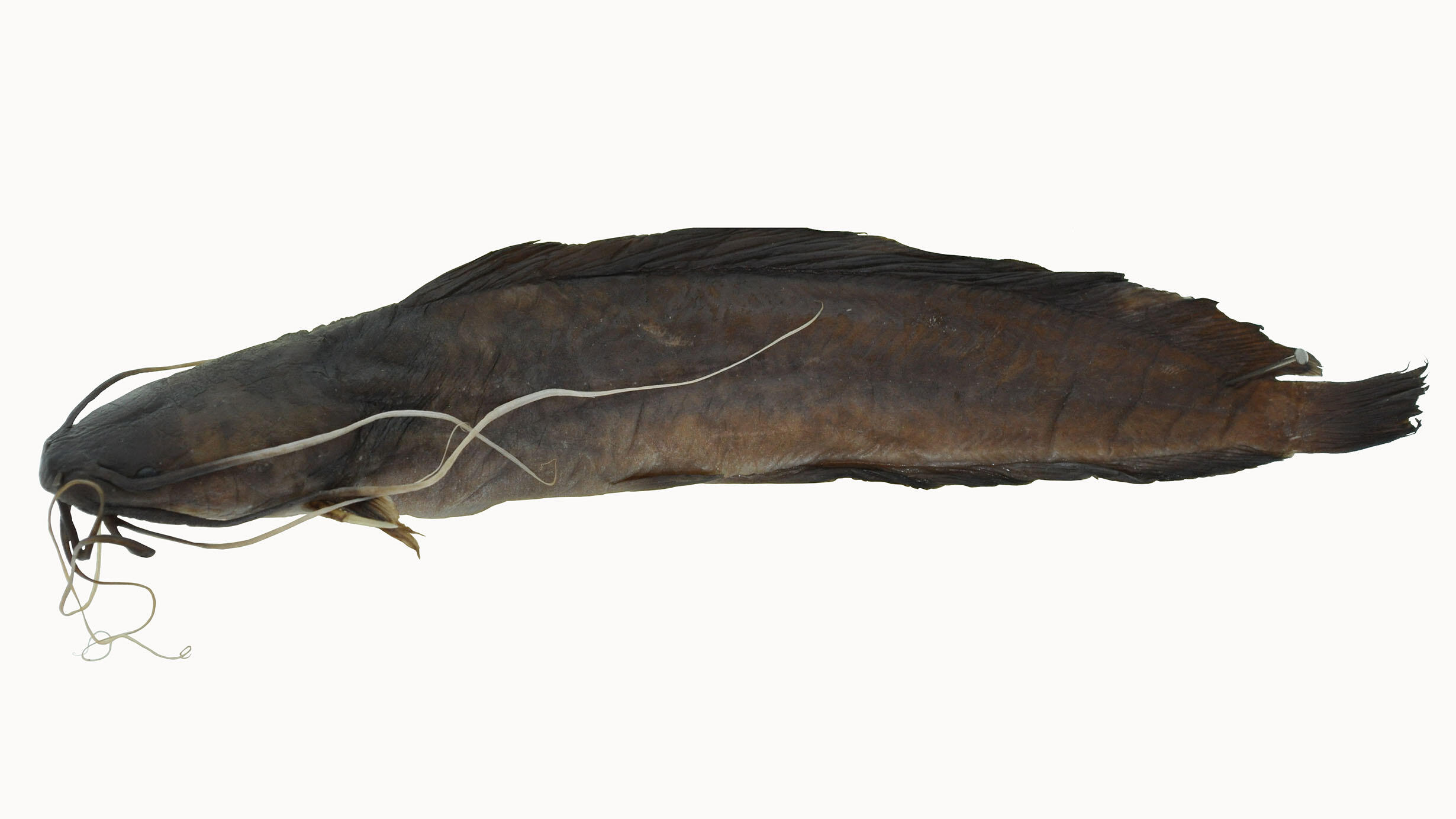 The holotype specimen of the new species, Clarias monsembulai.
The holotype specimen of the new species, Clarias monsembulai.© Max Bernt
Two Museum scientists and a Congolese collaborator were cited for the discovery of a new species of freshwater catfish in a New Species report published today by SHOAL, the freshwater fish specialist group from the International Union for the Conservation of Nature (IUCN), and the California Academy of Sciences in conjunction with World Wildlife Day, an international celebration established by the United Nations.
For Axelrod Research Curator of Ichthyology Melanie Stiassny, recent Museum Gerstner Scholar Max Bernt, and Raoul Monsembula, for whom the new species, Clarias monsembulai, is named, it is a distinction many years in the making.
The specimens were collected in 2006 and 2010 by Raoul Monsembula, a biology professor at the University of Kinshasa, who collected various species from rivers in the Salonga National Park in the Democratic Republic of Congo and brought them to the Museum. Last year, Bernt, an evolutionary biologist who studies the diversity of fishes and now working at Susquehanna University, was surveying Clarias catfishes in the Museum’s collections and noticed something different in one of the specimens.
“[Bernt] was going through our collections … including Raoul’s collection, and he realized that what we thought was a [previously] described species was, in fact, probably something new,” Stiassny told the nonprofit conservation news service Mongabay in an interview.
Working together, Stiassny and Bernt confirmed a distinct new species of catfish. They named the species after the biologist who collected it, describing Clarias monsembulai in an August 2022 paper in American Museum Novitates.
“It’s not always possible to recognize new species while you’re in the field. In museum collections, you are able to examine the specimens more closely and compare them to related species,” Bernt said. “Being able to make these comparisons is one of the reasons why museum collections are such a critical resource for documenting and describing biodiversity.”
© Max Bernt
The new species is distinguished by its very long barbels, which the catfish uses to taste and smell things around it.
The Clarias catfishes are known as “air-breathing” for the ability of some in the genus to spend long periods of time out of water. Some, like the walking catfish (Clarias batrachus) are even known to wiggle across dry land and in search of food and water.
Because Clarias monsembulai lives in the tributaries of the Congo River, where humidity is high and there is no need to go looking for water, Stiassny thinks it’s not likely to survive long out of water. It may take occasional gulps of air, thanks to a highly vascularized appendage in its gills known as the “arborescent organ.”
The new catfish is one of 201 freshwater fish described in 2022.
“It may come as a surprise to some to learn that hundreds of freshwater fish species are described every year,” Kathy Hughes and Brian Zimmerman, co-chairs, IUCN Freshwater Fish Specialist Group, write in today’s report. “But it shows just how much there is for us to learn about what lies beneath the surface of the planet’s freshwaters. More than half of all fish species live in freshwater, which is remarkable considering less than 1 percent of Earth’s water is liquid freshwater.”
Citing Greenpeace, for which Monsembula is the regional coordinator in Central Africa, the report notes that Clarias monsembulai is an addition to over 128 fish species that have already been identified in the Salonga National Park, a UNESCO World Heritage Site and Africa’s largest tropical rainforest reserve.
“To be an African scientist today, one has to be an African activist,” Monsembula told Mongabay. “[We need to] keep Congo Basin forest intact to make sure that we are not disturbing its endemicity. There [could] be many things we can discover in the near future if our forest stands in a good state. If we are destroying it, we are surely helping new species to disappear even before describing them.”